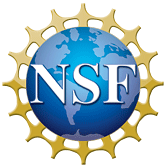Summary
| Also known as
|
|
| Model type
|
Modular
|
| Model part of larger framework
|
|
| Note on status model
|
|
| Date note status model
|
|
Technical specs
| Supported platforms
|
Linux, Windows
|
| Other platform
|
|
| Programming language
|
Python
|
| Other program language
|
|
| Code optimized
|
Single Processor
|
| Multiple processors implemented
|
|
| Nr of distributed processors
|
|
| Nr of shared processors
|
|
| Start year development
|
2002
|
| Does model development still take place?
|
Yes
|
| If above answer is no, provide end year model development
|
|
| Code development status
|
|
| When did you indicate the 'code development status'?
|
|
| Model availability
|
As code, As teaching tool
|
Source code availability
(Or provide future intension)
|
Through owner"Through owner" is not in the list (Through web repository, Through CSDMS repository) of allowed values for the "Source code availability" property.
|
| Source web address
|
|
| Source csdms web address
|
|
| Program license type
|
Other
|
| Program license type other
|
--
|
| Memory requirements
|
minimal
|
| Typical run time
|
less than 1 minute after preprocessing
|
In/Output
| Describe input parameters
|
Source inputs consist of global, spatially distributed (GIS) raster datasets: hydrological properties (river basin systems, runoff, reservoirs, irrigation, rainfall), topographic slope, land use, agricultural N & P inputs (fertilizer, manure), atmospheric N deposition, sewage, N fixation, etc.
|
| Input format
|
ASCII, Binary
|
| Other input format
|
|
| Describe output parameters
|
Primary outputs: N, P, Si, and C yields and loads by river basin and nutrient form. Secondary outputs: Source attribution by nutrient form and main natural and anthropogenic inputs to watersheds. Total Suspended Solids are also predicted.
|
| Output format
|
ASCII
|
| Other output format
|
|
| Pre-processing software needed?
|
No
|
| Describe pre-processing software
|
|
| Post-processing software needed?
|
No
|
| Describe post-processing software
|
|
| Visualization software needed?
|
Yes
|
| If above answer is yes
|
ESRI, IDL, Matlab
|
| Other visualization software
|
Most GIS software
|
Process
| Describe processes represented by the model
|
Natural, agricultural, atmospheric, and direct human (sewage and P detergents) inputs; effect of hydrological functioning; generalized loss of nutrients in soils and groundwater; loss in rivers, reservoirs, and through consumptive water withdrawals (irrigation).
|
| Describe key physical parameters and equations
|
Net N & P land surface balance (from inputs, incl. atm. deposition) modulated with calibrated runoff relationships to estimate exports to streams; point sources calculated from socioecon. and sewage treatment information; reservoir and consumptive water withdrawal loss using physical relationships.
|
| Describe length scale and resolution constraints
|
Limited by resolutn of input & river systems data; basins < 20,000 km2 currently poorly represented
|
| Describe time scale and resolution constraints
|
Operates at annual scale; monthly-seasonal time steps are being explored.
|
| Describe any numerical limitations and issues
|
Concerns about extrapolations beyond range of data used for model calibration and parameterization.
|
Testing
| Describe available calibration data sets
|
Calibration data consist of compilations of river N, P, Si and C annual yields by form.
|
| Upload calibration data sets if available:
|
|
| Describe available test data sets
|
Global (GEMS-GLORI), regional, national and literature compilations. A subset used for validation.
|
| Upload test data sets if available:
|
|
| Describe ideal data for testing
|
Robust river nutrient fluxes near the mouth representative of annual, contemporary conditions.
|
Other
| Do you have current or future plans for collaborating with other researchers?
|
Model is the result of an international collaboration that is a UNESCO-IOC workgroup (Global NEWS).
|
| Comments
|
Particulates model is regression-based, while dissolved model is more conceptual-mechanistic. Conceptual framework and data sets in development since 2002. Integrated modeling code framework (GNE) developed in 2007; currently tested on Windows only, but can be easily adapted to other platforms.
|
Introduction
History
Papers
Issues
Help
Input Files
Output Files
Download
Source |
